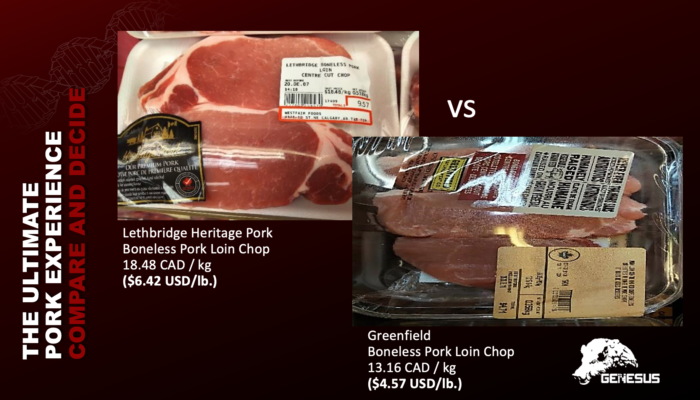Simon Grey, General Manager European Region
If you do an internet search on this topic you will see many reasons for people to choose a food; taste, appearance, price, is it healthy, convenience, is it ethical or environmentally sustainable. If you change the question to what’s the main reason people chose a food, it is taste.
A Statista survey in 2021 showed 82% of the decision to buy a food is taste, with 66% price, 58% healthfulness, 52% convenience and just 31% on environmental sustainability.
Incidentally, if you search why people refuse a food, the number one reason is, yes taste!!
So, what is the definition of taste “the sense by which the qualities and flavour of a substance are distinguished by the taste buds” reference Collins dictionary. There are of course other definitions, but all are similar.
Often taste is associated with smell, texture and appearance, all of which form part of the liking or disliking a food. One thing to remember here is as humans we are all different, there is no “one size fits all” when it comes to taste and liking or disliking a food.
In the vast majority of surveys, price is high up on the list of reasons for choosing a food. This is very logical. The vast majority of us have a budget. Being healthy is usually also high on the list. Interestingly in the majority of surveys, being ethical or sustainable (welfare, environment) are at the bottom of lists, which is a surprise when you look at a lot of food advertising in the media!
Where Does Pork Taste Come From?
There are many factors of course. However, there is one which consistently comes out in number 1 spot, marbling or intramuscular fat. Marbling is not only associated with better taste, it also is associated with other desirable traits as this study published on Pig333 in January 2016 shows.

This was a taste test of grilled pork done by 200 people aged 17 to 80, with 50% male and 50% female. Sample G1 had 0.96% marbling, G2 has 2.11%, G3 had 3.72% and G4 had 5.78%. The results clearly show the advantage of marbling…
Our Industry Has Got It Wrong!
As an industry as a whole we have focused on cost of production, ultra-lean pork (perceived health) and today more and more on ethics, welfare and sustainability. Agreed these are all “buying factors” for the end consumer but none of them the number one factor, taste as well as acceptability, tenderness and juiciness.
Surely, to increase sales of pork we should focus on the main reason people choose – taste!
Genesus have been involved in many, many large-scale commercial trials where cost of production has been measured. In the largest of these carried out, cost of production of Genesus pig was $0.49 higher than the lowest cost of production. Usually, we are told we are $1 to $2 higher than the lowest cost, which will always be an ultra-lean sire. Genesus has always selected for tasty, marbled pork at a competitive cost of production. Marbling is intra-muscular fat. We all know fat deposition requires more energy than lean, so we can expect a very slightly higher cost.
So, let’s accept an average of $2 extra cost to produce a live 285 lb (130kg) pig. In terms of saleable packaged meat at the meat counter of your local store we can assume about 150 lb (68kg) of meat, costing an extra $2. This is $0.013 per lb ($0.029 per kg) more. Note, the average retail price of pork is around $4.00 per lb ($8.8 per kg).
Non-marbled, cheapest pork $4.00 per lb ($8.8 per kg).
Marbled Genesus pork $4.013 per lb ($8.829 per kg).
Does anyone think there is a consumer who would take any notice of this difference? Especially bearing in mind that price is not the highest on list of reasons people choose a food!
Does anyone NOT THINK consumers would pay $0.013 per lb more ($0.029 per kg) for tastier marbled pork, when we know the effect on taste, texture, juiciness? This is just 0.3% more. Our evidence is consumers are very prepared to pay a significant premium for taste. The same store, same day comparison below shows the high quality Lethbridge Heritage
Pork product (http://www.susanevans.ca/newsletters/cpi_newsletter_08-2015/en/?article=CPU) compared to Greenfield never ever antibiotic, humanely raised, product (https://www.mapleleaffoods.com/brands/greenfield-natural-meat-co/).

One of our major competitor’s salespeople’s favourite phrases is “you can’t afford to produce tasty pork”. As the worlds largest supplier of pig genetics this is a remarkable point of view.
Ignoring and even selecting by choosing against the major reason people buy a food is remarkable. This “extra cost of less than a cent per portion” (average portion size for a meat meal is ½ lb or 226 g) when it comes to the final product on the retail shelf or plate in a restaurant is totally irrelevant.
Be Careful What `you Wish For, It May Come True!
Our industry has gone for lowest FCR, lowest cost of production and ultra-lean pork and has been very successful. But at what cost? Today in most markets we see pork consumption at best static and in most places falling. This is, Genesus believe, because the industry has not taken care of the number one reason people choose to buy one food over another, and more importantly why they stop eating a certain food, TASTE!
Categorised in: Featured News, Global Tech
This post was written by Genesus



